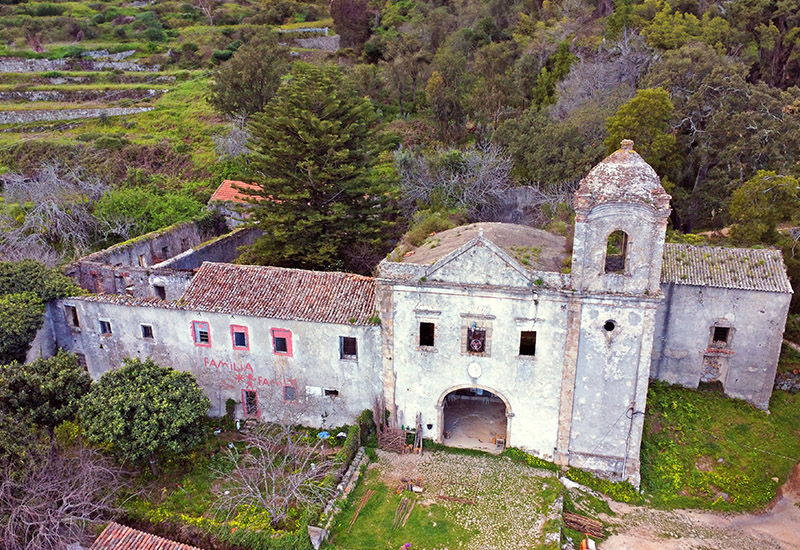Strolling through the forested hills overlooking Monchique, a long-forgotten cobbled path comes into view. With the remains of what would have once been an ornate granite gateway, this is the entrance to the 16th-century Convent of Nossa Senhora do Desterro. The eerie remains of the basilica have been home to Senhor Vidaúl for almost 50 years.
With a panoramic view of the Serra de Monchique, the ruined Convent of Nossa Senhora do Desterro has been the topic of discussion and mystical happenings for centuries, but Senhor Vidaúl has kept the memory of Monchique’s historic convent alive by giving tours to visitors who dare walk up the overgrown, jagged pathway.
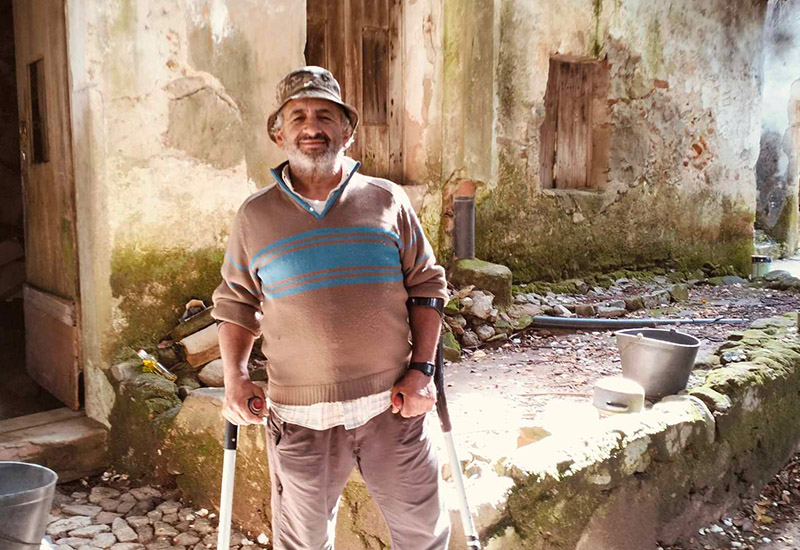
Legend has it that the convent was founded by two sailors who vowed to build a church on the first sight of Portuguese land that they saw after being miraculously saved from a storm at sea. There may be some truth in this age-old folk tale, as the convent was founded in 1631 by Mariner Pero da Silva (1580–1639), who was once Governor of Portuguese India. The Manueline-style basilica was named after a small ivory icon of Our Lady of Exile (Nossa Senhora do Desterro), which sailors had brought back from India and gifted to the convent. The Friars of the Third Franciscan Order, who inhabited the convent until it was closed in 1834 as part of the extinction of religious orders, venerated the icon.
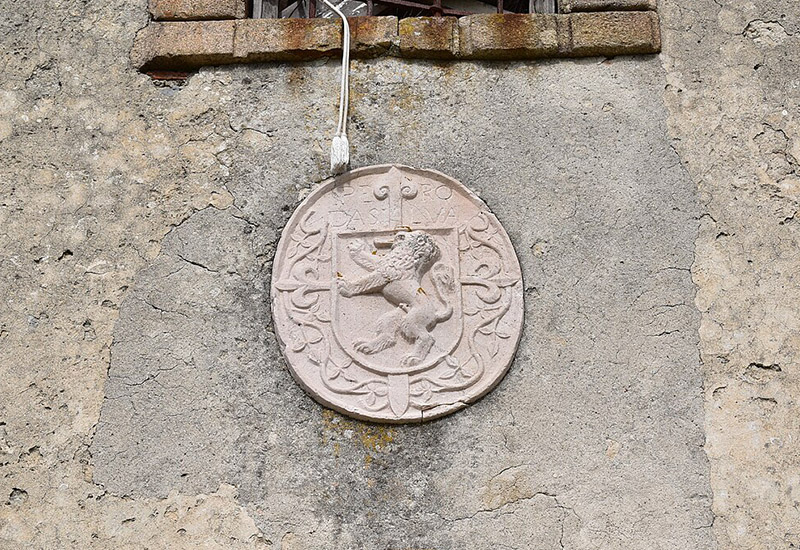
Like much of mainland Portugal, the convent was partly destroyed by the 1755 earthquake that engulfed the country, causing widespread damage. Ten years after the convent was nationalised, it was sold at a public auction in 1842 and changed ownership several times before it became a sanctuary for the homeless. As early as 1911, painter João Silva reported that the convent was already partially ruined in an article in the magazine O Occidente.
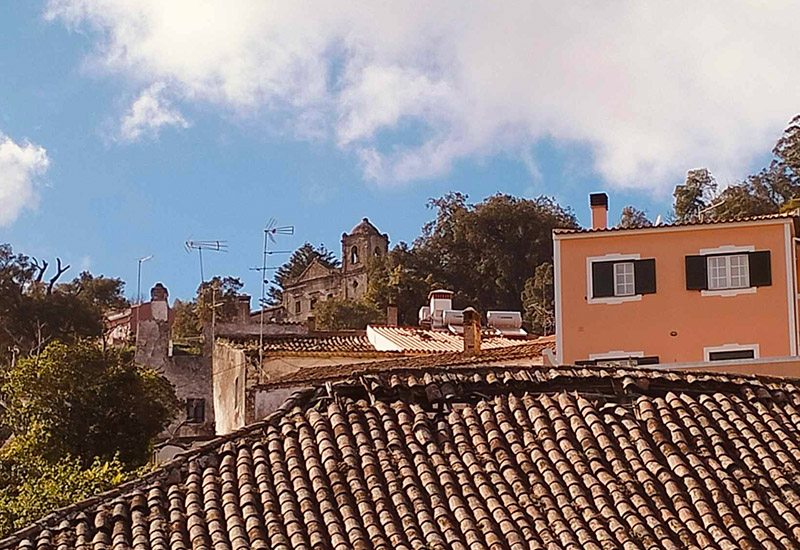
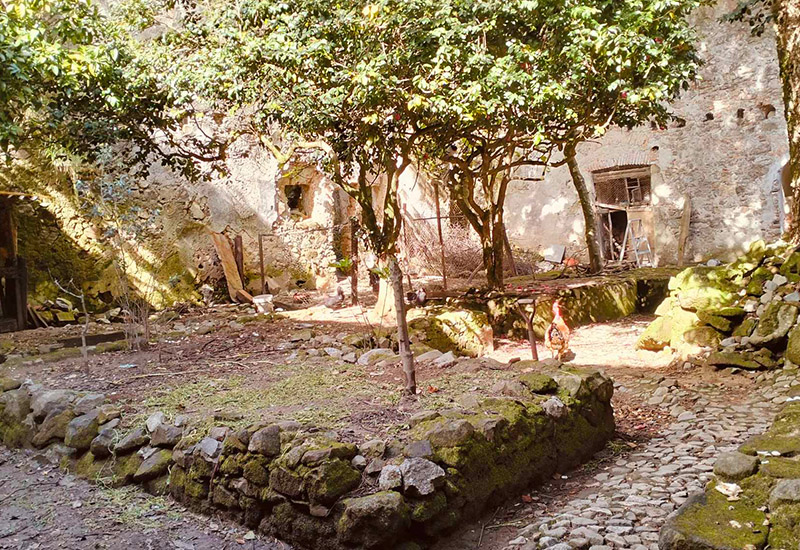
For the past 30 years or so, adventurous tourists have hiked up to the convent ruins to seek out what lies beyond its cracked façade, ignoring the graffiti and ‘keep out’” warning signs. Many have noted that a jovial ‘caretaker’ allows visitors to wander around the ruins in return for a donation. So, with curiosity, I walked up to the grand entrance to meet the man from the convent.
Out of a side door, a gentleman beckoned me over, pointing inside the convent. It was Senhor Vidaúl, a Monchique veteran who has lived in the convent for most of his life. Shaking me by the hand, Senhor Vidaúl picked up his crutches and walked me through his living room and out into the former cloisters, an open-air courtyard filled with planters and chickens clucking away. This was originally the lifeblood of the convent, a place where they raised livestock to put food on the table. One could make out the original archways, which were once decorated with tiled stations of the cross.
Senhor Vidaúl then pointed out the old moss-covered well, known as the Fonte dos Passarinhos, that was formerly decorated with tiles depicting birds. “There also used to be a magnolia tree here,” Senhor Vidaúl told me. “It was considered the largest of its kind in Europe; some say it was imported from India, but it died a long time ago.” The first reference to the tree was made in 1915 in the quarterly bulletin of the Associação Protetora da Árvore. The bulletin stated that “the superb Magnólia de Monchique represents the best tree of its kind that we are currently aware of”, and in 1947, it was considered an item of national public interest by the Portuguese state.
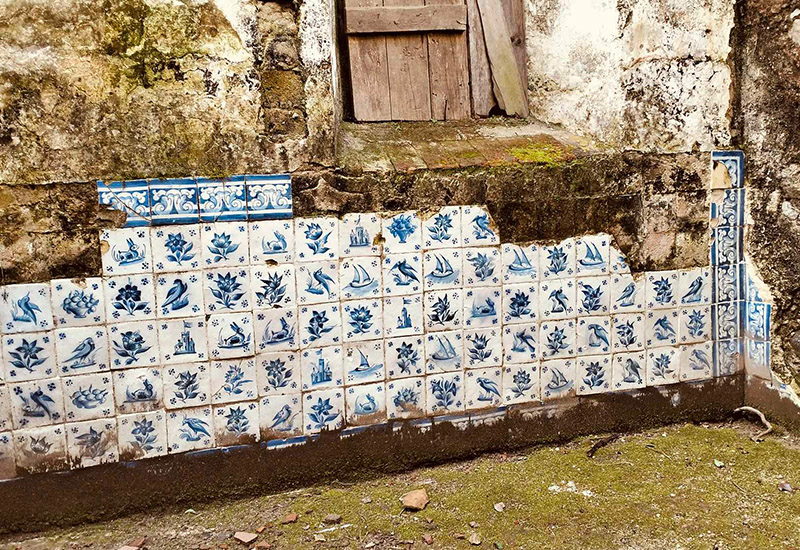
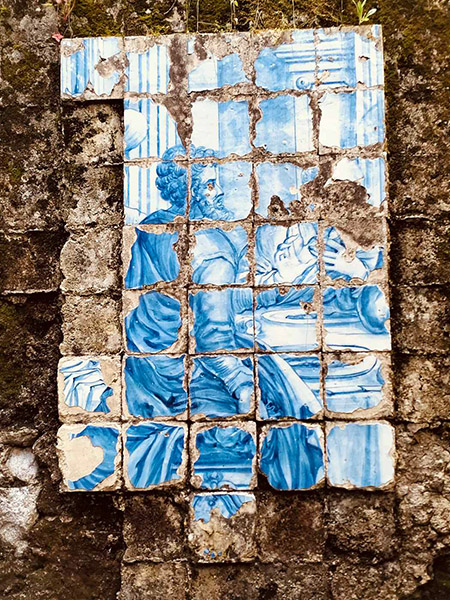
The area at the front of the covent where Senhor Vidaúl lives used to be an atrium for feeding the poor and needy. Today, it serves a similar purpose: sheltering a man who was born in need but has found solace within this mystical building, which has brought joy to many throughout its long and turbulent history. Asking Senhor Vidaúl how he came to the convent, he explained that his family has always faced hardships and simply needed a place to stay. “My father paid the owners and I’ve been here ever since,” he said as he threw corn on the ground for his chickens.
It was almost 50 years ago when Senhor Vidaúl’s parents, Solange and Fernando, left their previous dwelling in Monchique after working on the land of a wealthy family. In the hope of a better life, they heard that the ruined convent was used as a shelter for the homeless, and so, with just a couple of bags, the couple and their three children, Vidaúl, António and their sister, moved into a small room within the convent’s remaining cells. The family cultivated the surrounding grounds, growing fruit and vegetables. Senhor Vidaúl recounts his father’s words: “We may not have money, but at least we have food.” Solange and Fernando remained in the convent until they died. Senhor Vidaúl’s sister moved out, leaving Senhor Vidaúl and his brother António alone in the convent long after the other inhabitants had gradually left. Eventually, António married and left the convent and moved nearby, but he regularly spends time with his brother, tending to crops in the convent’s grounds and pointing tourists towards the ruin’s entrance.
One might say that if Senhor Vidaúl hadn’t continued to live at the convent, this historic building might have been lost altogether. From the ruins that saved his family from destitution, it was Senhor Vidaúl who would save the centuries-old convent from destruction during the forest fires back in 2018. As fires raged across the Serra de Monchique, too close for comfort for many in the village, Senhor Vidaúl was asleep, alone in the convent, unaware of the events happening outside. Waking to see flames rampaging up the hill, he shot out of bed and collected water from a spring to drench the convent’s walls. His brother António would later arrive, having run up the steep pathway with a shovel to pat down the embers that were now on the convent’s doorstep. The two men, alone in the dead of night, tackled the blaze, thus saving the convent, although later false rumours spread that it had been destroyed. Senhor Vidaúl and António take no praise for saving the historic landmark, brushing it off as one of life’s challenges and seeing it as a miracle they and the convent had survived.
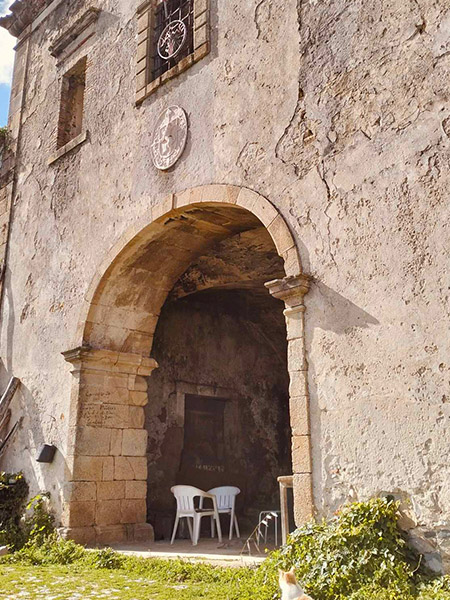
As we approached the former dining room, Senhor Vidaúl told me, “There’s something mysterious about the convent.” Originally, the dining room would have had two lines of tables for the friars to dine at and a much larger table for the superiors beneath the backdrop of a tiled mosaic depicting Leonardo Di Vinci’s Last Supper. Now, there are only a few tiles remaining. “Much of the interior was moved, looted, or damaged,” Senhor Vidaúl said with a sense of sadness. Now, regrettably, only a few tiles remain, chipped, cracked, and covered with moss.
Senhor Vidaúl survives solely on donations given by tourists and food he cultivates himself. As we walked back into the courtyard, we passed a dilapidated room that now serves as a chicken coup. This was the mortuary chapel Senhor Vidaúl explained, before we made our way to the sanctuary, past small hovels which would have been the friar cells. Going through a side entrance, we were now at the heart of the sanctuary: an enormous space that would have been a sight to behold back in its heyday. Now, without its roof, one can still make out the high altar where the icon of Nossa Senhora do Desterro would have been housed. Thankfully, the ivory icon was saved by a friar who, during a storm in 1834, hid it in his habit and later gifted it to a local woman. Eventually, the icon made its way to the parish church of Monchique, where it is displayed in one of the side chapels. The canopy and the main altarpiece are now part of the church of São Sebastião, just a stone’s throw from the parish church.
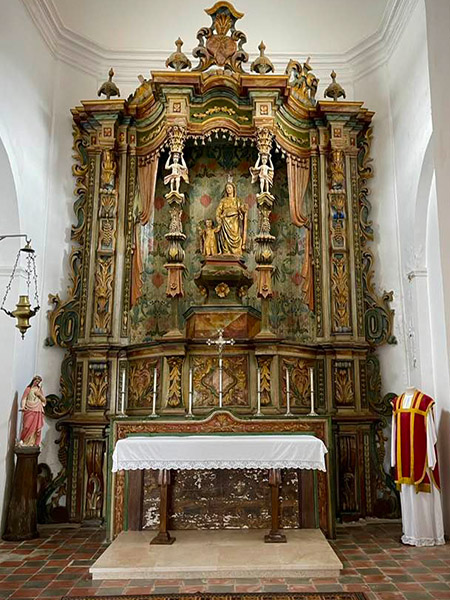
To one side of the convent’s sanctuary is a chapel, which, unlike most of the buildings, has fared very well considering its age. Complete with its original roof and some of its altar, one can make out numerous prayers etched on the walls, left by hundreds of tourists from years gone by. Messages of thanksgiving and prayers for the sick, dead, and dying fill the former altar as high as the hand can reach.
As Senhor Vidaúl left me to explore alone, I had time to reflect on this beautiful building that is slowly being reclaimed by nature. One could feel a presence within this grand basilica, a feeling of a spiritual kind in a strangely peaceful setting amongst the brambles and rubble. It is a place where one could spend hours just sitting peacefully, listening to nothing more than the sound of birds tweeting and the wind lightly whispering around the crumbling walls. Just like Senhor Vidaúl said, “It’s a mystical place.”
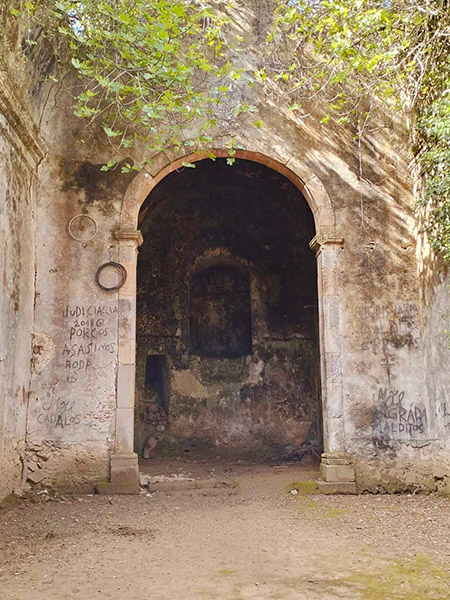
The story of Senhor Vidaúl and his family is almost biblical. It reminds me of the nativity story, a family with no room at the inn, only to find a dilapidated religious dwelling to shelter. Whilst it is sad to see a place of national importance falling to the ground, one can’t help but think that it has served a purpose, just as the Gospel teaches, “to give to those in need”.
Bidding farewell to the man from the convent, I thanked him for showing me around this marvellous building. I asked if he would mind if I took his photo, and he was more than pleased to pose in front of the camera under the backdrop of the cloisters. Wishing him all the best and leaving a donation, I left the convent imagining the sound of the bells chiming from their grand bell tower.
In the distance, I could see a small gathering of curious tourists heading towards me, no doubt wanting to take a look inside Monchique’s oldest monument where history oozes from every corner, and Senhor Vidaúl, the aptly named ‘man from the convent’, who makes it so intriguing.
Convento de Nossa Senhora do Desterro: Caminho do Convento, 8550 Monchique
